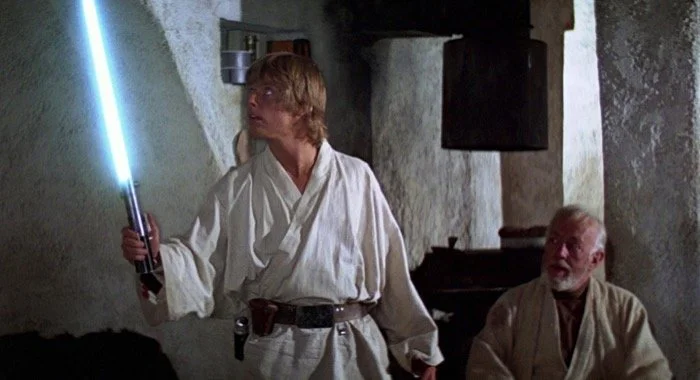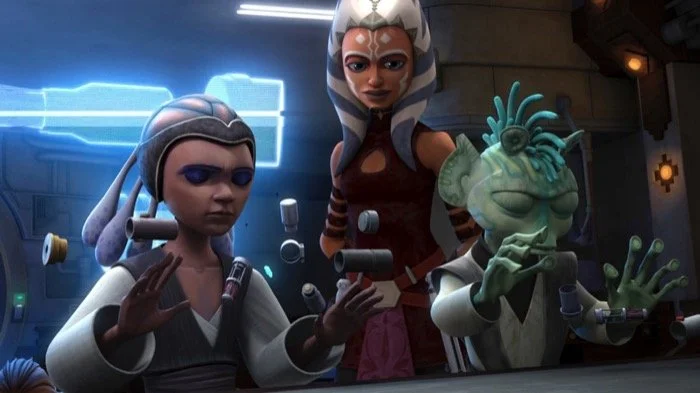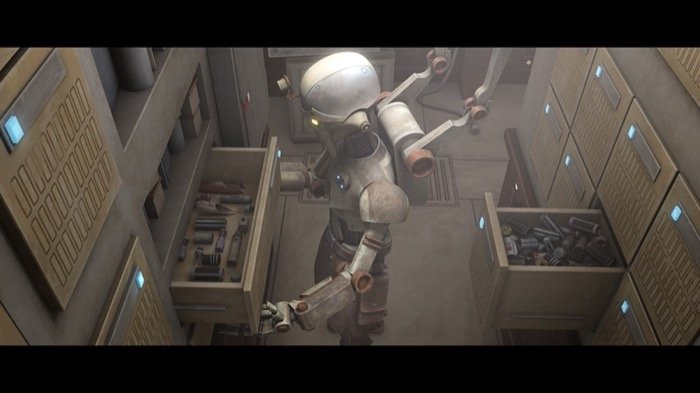7 Interesting Facts About The Lightsaber
The lightsaber, a melee weapon used by the Force-sensitives, has become synonymous with the Star Wars franchise. Since their introduction, lightsabers have caught the imagination of fans, young and old alike.
What, you might ask, makes them so much more alluring than mere swords or guns? As conveyed so rightly by Obi-Wan Kenobi in A New Hope, lightsabers are indeed an elegant weapon of a more civilized age.
While they can cut through almost anything, they do not leave a stream of blood behind in combats. Unlike swords and guns, they have many uses beyond dueling.
Lightsabers can be used to form a shield to deflect an attack, slice through metal, act as a source of light, and even evaporate liquids. Here are a few facts about the lightsaber that may interest you.
RELATED:
1. Lightsaber Philosophy
While lightsabers are often considered combat weapons, they are not merely those. George Lucas mentioned that he created lightsabers as “a symbol of a simpler time – a time when honour ruled.” The Jedi used the Force as a conduit between themselves and the lightsaber.
A Jedi's only true ally, the lightsaber, thus, becomes an extension of their own body. Attuned with the Force, the living kyber crystal within the lightsaber helps the Jedi to centre themselves, extend their Force awareness, and rise above the chaos of combat.
The non-canonical book, The Jedi Path: A Manual for Students of the Force, puts the knowledge of lightsaber combat under the chapter on self-discipline and states that the mastery of one’s physical self is a precursor to mastering lightsaber skills. No wonder Master Yoda was unparalleled in wielding the lightsaber!
2. Origin Of The Lightsaber
Though the lightsaber is the primary weapon of the Jedi Knights, the peace-keepers of the galaxy, it is well known that it is wielded by the Sith too and the development of the lightsaber into its current form had input from both the Jedi and the Sith.
According to the Legends, the precursor to the lightsaber, the Forcesaber, was built to channel the dark side of the Force. This was followed by the first lightsaber, the First Blade, which was forged before the Force Wars by the Weapon Master. However, these lightsabers were not very stable and as a result, the earliest Force Wars on Tython between the Jedi and the Sith were waged using metal swords that were forged using the Force.
Greater stability was achieved by the development of the Protosabers, which used a belt-worn power pack that provided energy to the crystal. These suffered from portability issues and it was the Sith that replaced the power pack with the power cell inside the hilt that gave the lightsabers their present compact structure.
3. How Do The Jedi Make Their Lightsabers
Harvesting a kyber crystal, which forms the heart of the lightsaber, and assembling their own lightsaber is a Jedi right of passage and marks an important milestone in the journey of a Jedi from an initiate to a Padawan.
In The Clone Wars episode named after this ceremony, The Gathering, Jedi initiates travel with Ahsoka and Master Yoda to the Jedi temple on the sacred planet, Ilum, to overcome challenges unique to each youngling. Once they pass the test, a unique kyber crystal that is in tune with their Force presence reaches out to them.
The kyber crystals are sentient and help the Jedi find balance in the Force. Initially colourless, the crystal attains a colour on forming a Force connection with the Jedi.
4. Professor Huyang, The Source Of All Lightsaber Knowledge
Should you ever need more information on lightsabers, the ancient droid, Professor Huyang, is who you need to find. He has taught the sacred art of using the Force to assemble their lightsabers to several generations of Jedi younglings, including Grand Master Yoda himself!
After harvesting their kyber crystal, the younglings would get aboard the Crucible and assemble their lightsaber under the tutelage of Professor Huyang. The Doctor Who actor, David Tennant, won a Daytime Emmy Award for voicing Professor Huyang in the animated series, The Clone Wars.
5. Kyber Crystals Can Be Made To Change Their Colour
Unlike the Jedi, the Sith cannot get in tune with a kyber crystal, and hence, they need to use the dark side of the Force to pour their fear, anger, hatred, and pain into a crystal that is preferably taken by force from a Jedi, which turns the crystal red.
This process, known as bleeding, is intense and may sometimes crack the crystal, as was the case when Kylo Ren bled his former Jedi self, Ben Solo’s, crystal. Bleeding is reversible and a red crystal can be healed or purified.
Ahsoka Tano purified the crystals from the double-bladed lightsaber of an inquisitor turning them white, a colour that symbolises her non-affiliation to Sith or Jedi.
6. Lightsabers Can Run Out Of Power
The lightsaber requires an immense amount of power to do the stuff it does (e.g., the power required by Qui Gon Jinn to melt the metal door in The Phantom Menace was estimated by a physicist to be approximately 28 kWatts).
The kyber crystal is typically powered by a diatium power cell placed within its hilt. The diatium power cell loses energy slowly and recharges itself eventually leading to a battery life of 50-100 years for a properly assembled lightsaber.
However, the power cell can be drained by overuse, as was experienced by Master Mace Windu in the Legends novel, Shatterpoint.
7. Attempts At Creating A Real-life Lightsaber
While most Star Wars fans on planet Earth wait for a way to emerge to reach Ilum to get our own kyber crystals, some of us have already made several attempts to make real-life lightsabers.
One such attempt that came really close to creating a protosaber with a retractable blade was made by the YouTube content creator, Hacksmith Industries, who used plasma at 4000 degrees Fahrenheit) for the lightsaber blade.
This lightsaber could burn through almost anything. After all, the lightsabers from the franchise also have a plasma blade suggesting that we might be getting close to creating the actual thing!
READ NEXT:
Source(s): Wookieepedia, Wired, SciFiStackExchange, StarWars, YouTube [1], [2]








